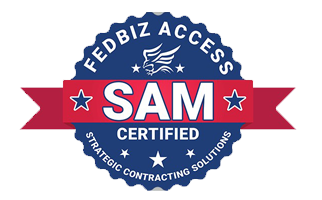
Introduction
Concrete flooring has become a staple in commercial spaces due to its durability, versatility, and cost-effectiveness. The aesthetic evolution of concrete floors has transformed them from simple, utilitarian surfaces into stunning elements that define the ambiance and style of various environments.
The rise of beautiful concrete flooring highlights how this material can be tailored to suit diverse design needs. From polished finishes to stained and epoxy-coated surfaces, concrete floors offer endless possibilities for creating visually appealing commercial spaces.
The purpose of this article is to delve into the different types of commercial concrete flooring available today. By showcasing inspiring examples, we aim to demonstrate how these flooring options can elevate any commercial space, enhancing both its functionality and aesthetic appeal.
Explore the transformative potential of concrete flooring and discover why it is an excellent choice for your next commercial project.
Understanding Commercial Concrete Flooring
Concrete flooring in commercial spaces is a versatile and durable option that has gained popularity for its strength and aesthetic appeal. Commercial concrete flooring refers to floors made from concrete that are specifically designed to withstand the high traffic and heavy use typical of commercial environments.
Key Characteristics of Commercial Concrete Flooring
- Durability: Concrete floors are known for their resilience and ability to endure heavy loads, making them ideal for warehouses, retail stores, and industrial facilities.
- Low Maintenance: Once sealed, concrete floors require minimal upkeep, which is advantageous for busy commercial settings.
- Cost-Effectiveness: Compared to other flooring options, concrete is generally more affordable both in initial cost and over its lifespan.
- Aesthetic Versatility: Concrete can be polished, stained, or coated with epoxy to achieve various looks that align with brand identity and design preferences.
Understanding these characteristics helps in selecting the right type of concrete floor for your commercial space. For more insights into the foundational aspects of concrete work, explore Building Pads by MBC Management. Additionally, learn about optimal conditions for stronger structures through Achieving Optimal Concrete Curing Conditions in Commercial Construction.
Types of Commercial Concrete Floors
Different types of concrete floors offer unique benefits suited to various commercial needs. In the following sections, you will discover specific types such as polished, stained, epoxy-coated, and overlay flooring. Each type brings distinct advantages that cater to different functional and aesthetic requirements.
By understanding these elements, you can make an informed decision about the best concrete flooring option for your commercial space.

1. Polished Concrete Floors
Polished concrete floors have become a popular choice for commercial spaces due to their durability and sleek appearance. These floors are created by grinding the concrete surface with progressively finer diamond polishing pads, resulting in a high-gloss finish that reflects light beautifully.
Benefits of Polished Concrete Floors
Durability: Polished concrete is incredibly resilient and can withstand heavy foot traffic, making it ideal for commercial settings.
Low Maintenance: These floors require minimal upkeep, needing just occasional mopping to maintain their shine.
Cost-Effective: Polishing existing concrete can be more affordable than installing new flooring materials.
Aesthetic Appeal and Versatility
Polished concrete floors offer a modern and sophisticated look that complements various interior design styles. Their versatility allows them to be customized with different levels of sheen, from matte to high-gloss finishes.
For those interested in seamless integration of design and functionality in commercial projects, MBC Management’s Project Development services provide comprehensive support from planning to completion.
Explore stunning examples like the Ellwood Texas Forge Navasota – Finish Machine Shop, where polished concrete floors enhance both the aesthetic appeal and functional efficiency of the space.
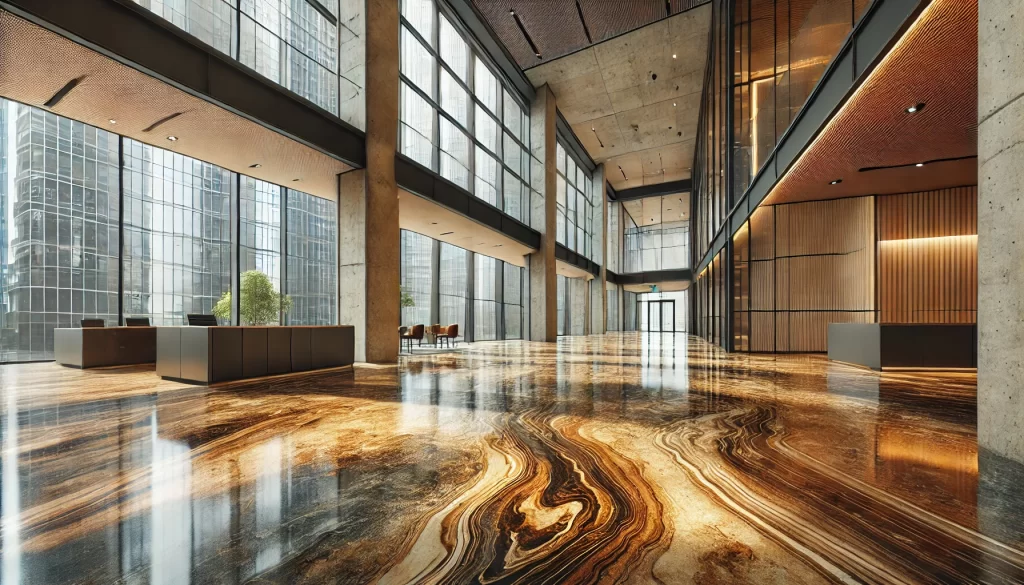
2. Stained Concrete Floors
Stained concrete floors are a popular choice for commercial spaces due to their unique aesthetic appeal and durability. The process of staining concrete involves applying a chemical stain that reacts with the concrete’s minerals, creating a rich, variegated finish that can mimic the look of natural stone, wood, or even marble.
Process of Staining Concrete Floors
The staining process typically includes:
Surface Preparation: Cleaning the concrete surface to remove any contaminants that might interfere with the stain.
Application of Stain: Applying the chosen stain with a sprayer, brush, or roller. The stain penetrates the concrete and reacts chemically to produce the desired color.
Neutralizing and Cleaning: After sufficient time for the reaction, neutralizing the stain with an appropriate solution and thoroughly cleaning the surface.
Sealing: Sealing the stained surface to protect it from wear and enhance its appearance.
Available Color Options
Stained concrete floors offer a wide range of color options. Acid-based stains typically provide earthy tones such as browns, tans, terra cottas, and soft blue-greens. Water-based stains expand this palette with colors like black, white, and vibrant shades such as reds and yellows.
Cost-Effectiveness and UV Resistance
Stained concrete is cost-effective compared to other flooring options like tile or hardwood. It offers long-term savings due to its low maintenance requirements and durability. Additionally, stained concrete floors exhibit excellent UV resistance, ensuring that colors remain vibrant even when exposed to direct sunlight.
When considering different flooring options for your commercial space, stained concrete floors present an attractive balance of aesthetics, durability, and cost-efficiency.
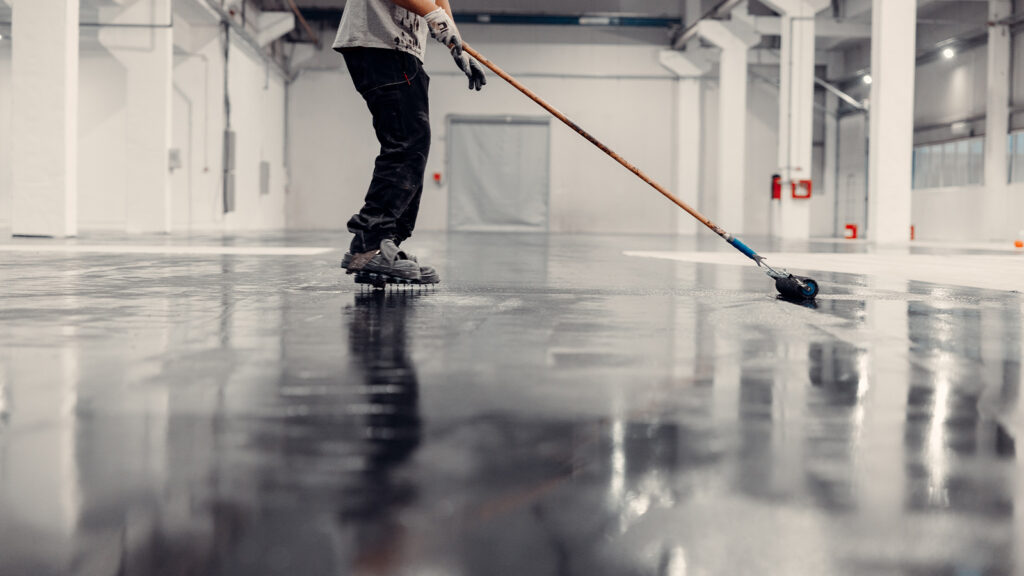
3. Epoxy-Coated Concrete Floors
Epoxy-coated concrete floors offer a highly durable and aesthetically pleasing option for commercial spaces. This type of flooring involves applying an epoxy resin over the concrete surface, creating a seamless and glossy finish.
Features and Advantages
- Durability: Epoxy coatings provide exceptional resistance to wear and tear, making them ideal for high-traffic areas.
- Chemical Resistance: These floors are highly resistant to chemicals, making them suitable for environments like factories and laboratories.
- Aesthetic Flexibility: Available in a variety of colors and finishes, including metallic and quartz, epoxy-coated floors can be customized to match any design scheme.
- Easy Maintenance: The smooth, non-porous surface is easy to clean and maintain, reducing long-term upkeep costs.
Installation Complexity and Maintenance Requirements
Installing epoxy-coated concrete floors involves several steps that require professional expertise:
- Surface Preparation: The existing concrete must be thoroughly cleaned and any cracks or imperfections repaired.
- Primer Application: A primer layer is applied to ensure proper adhesion of the epoxy coating.
- Epoxy Application: Multiple layers of epoxy resin are applied, often requiring precise timing between coats.
- Curing Process: Adequate curing time is essential to achieve optimal durability and appearance.
Maintenance is relatively straightforward but requires regular cleaning to maintain its pristine condition. Periodic reapplication might be necessary depending on the level of usage.
For more insights into how technology can enhance your commercial space design, explore 3D Rendering – MBC Management. To see a real-world example of a project incorporating durable flooring solutions, check out Mid-South Synergy – Lonestar Operations Campus.
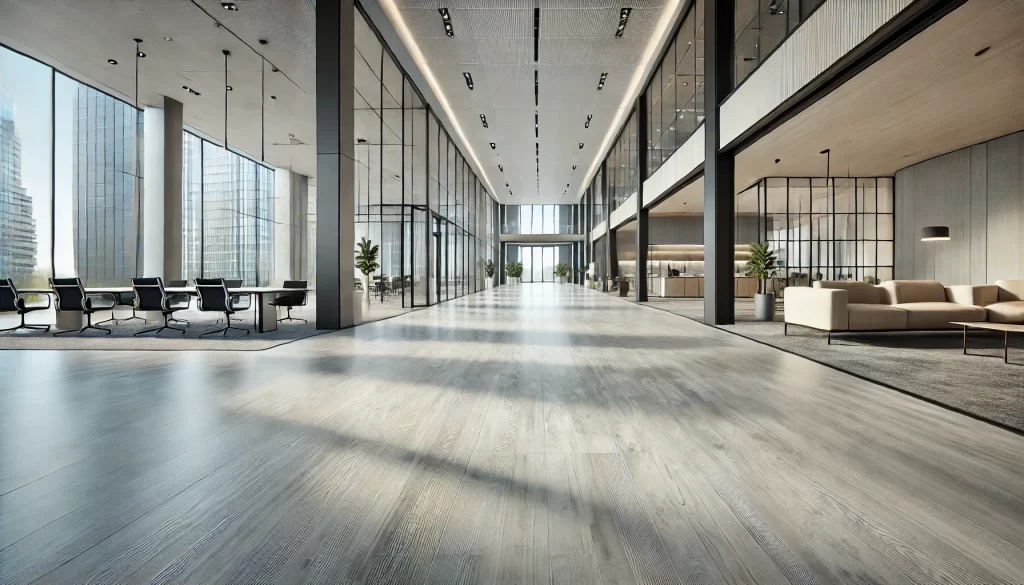
4. Overlay Flooring for Commercial Spaces
Overlay flooring for commercial spaces offers a blend of functional finishes and impressive design flexibility, making it a popular choice among business owners seeking both aesthetics and practicality.
Functional Finishes
Overlay flooring can be customized with various functional finishes to meet the specific needs of a commercial environment. These finishes provide:
- Slip resistance: Essential in high-traffic areas to ensure safety.
- Durability: Enhanced resistance to wear and tear, which is crucial for spaces like retail stores or warehouses.
- Moisture resistance: Ideal for environments where spills or humidity are common, such as restaurants or industrial kitchens.
Design Flexibility
One of the most attractive features of overlay flooring is its design versatility. It allows you to:
- Replicate other materials: Mimic the look of marble, stone, or even wood without the associated costs.
- Custom patterns and textures: Create unique designs that align with your brand identity.
- Color variations: Choose from an extensive palette to match your interior decor.
Seamless Integration
The ability to achieve seamless integration within existing structures enhances the appeal of overlay flooring. Whether you’re renovating or starting from scratch, overlay options can be tailored to fit your needs. For those considering comprehensive solutions, exploring our Design Build Construction services can offer additional insights into creating cohesive commercial spaces.
Overlay flooring stands out as a versatile and durable option for various commercial applications, offering both aesthetic appeal and practical benefits.
Factors Influencing the Choice of Concrete Flooring Type
Choosing the right type of concrete flooring for your commercial space involves several key considerations:
1. Cost Considerations
Different types of concrete flooring come with varying costs. Polished concrete, for instance, tends to be more expensive initially due to the labor-intensive process. Stained concrete is generally more cost-effective, offering a wide range of color options at a lower price point. Epoxy-coated floors might involve higher upfront costs due to the specialized materials and installation process but can save money in the long run through durability and low maintenance.
2. Maintenance Requirements
Maintenance plays a crucial role in the longevity of your flooring. Polished concrete requires regular cleaning and occasional re-polishing to maintain its shine. Stained concrete floors might need resealing every few years to protect against wear and tear. Epoxy coatings are known for their low maintenance, needing only regular sweeping and mopping to keep them looking new.
Key Points:
• Polished Concrete: Regular cleaning, occasional re-polishing.
• Stained Concrete: Periodic resealing.
• Epoxy-Coated Floors: Minimal maintenance.
3. Aesthetic Preferences
Aesthetic appeal can significantly influence your choice. Polished concrete offers a sleek, modern look that can enhance any commercial environment. Stained concrete provides a variety of color options, allowing you to align the floor with your brand’s identity. Epoxy coatings can be customized with different colors and patterns, adding a unique touch to your space.
Aligning Flooring with Brand Identity:
- Polished Concrete: Modern, sleek aesthetics.
- Stained Concrete: Versatile color options.
- Epoxy Coatings: Customizable designs.
Cost considerations and maintenance requirements directly impact long-term durability and overall expense, making it essential to weigh these factors carefully. Understanding how each flooring type aligns with your aesthetic preferences ensures that your choice not only meets practical needs but also enhances your brand’s identity.
For detailed insights into designing robust foundations for your commercial projects, visit our Foundation Design page.
Curious about what commercial concrete entails? Check out our guide on What is Commercial Concrete?
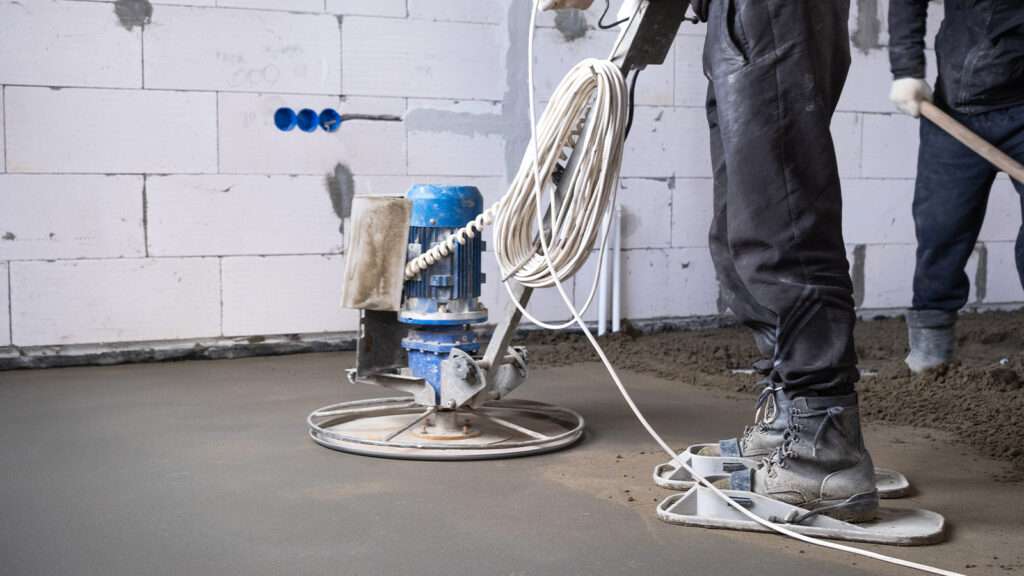
The Installation Process for Commercial Concrete Floors
Learning about the installation process of commercial concrete floors is crucial to ensure proper installation conditions and achieve a durable, aesthetically pleasing result. This multi-stage process involves several critical steps:
1. Pre-Installation Site Evaluation
Before any concrete is poured, a thorough site evaluation is necessary. This step includes:
- Assessing soil stability: Ensuring that the foundation will support the weight and stress of the concrete floor.
- Checking drainage systems: Proper drainage prevents water accumulation which can undermine the integrity of the concrete.
- Identifying existing utilities: Preventing damage to underground pipes and cables during installation.
2. Pouring
Once the site evaluation is complete, the next step is pouring the concrete. This stage focuses on:
- Mixing concrete correctly: Using the right ratio of cement, water, sand, and aggregates.
- Pouring evenly: Ensuring an even distribution to avoid weak spots or uneven surfaces.
- Using formwork: Temporary molds to shape and hold the concrete until it sets.
3. Leveling
After pouring, leveling is essential for creating a smooth and even surface. Tools like screeds and bull floats are used to:
- Remove excess material
- Eliminate air pockets
- Create a uniform texture
4. Finishing
Finishing adds both functionality and aesthetic appeal to the floor. Techniques in this stage include:
- Troweling: Smoothing out the surface with hand or power trowels.
- Texturing: Adding patterns or designs for visual interest or slip resistance.
- Edge finishing: Paying attention to corners and edges for a professional look.
5. Sealing
Sealing protects the concrete from stains, chemicals, and wear while enhancing its appearance. The options include:
- Penetrating sealers: Absorb into the concrete providing internal protection.
- Topical sealers: Form a protective layer on top of the surface.
6. Inspection
Finally, a detailed inspection ensures quality control. This involves:
- Checking for cracks or imperfections
- Verifying thickness and strength
- Ensuring compliance with design specifications
By following these steps meticulously, you guarantee a high-quality finish that aligns with both functional needs and aesthetic goals.
For more information on structural support during your project, explore MBC Management’s Structural Engineering services. Additionally, see our successful projects like Sealy ISD’s Elementary Parking Expansion which highlight our commitment to excellence in every aspect of construction management.
Understanding each phase of this process not only aids in planning but also highlights why professional installation is invaluable for achieving optimal results in commercial spaces.
Advantages of Choosing Commercial Concrete Flooring for Your Space
Eco-friendly flooring options are becoming increasingly important in today’s environmentally conscious world. Concrete flooring stands out as a sustainable choice due to its long lifespan and minimal environmental impact. The materials used in concrete are abundant and locally sourced, reducing the carbon footprint associated with transportation. Additionally, concrete floors can be finished without the need for harmful chemicals, making them an environmentally responsible option.
Environmental Benefits
Concrete floors contribute significantly to energy efficiency in commercial spaces. Their thermal mass properties help regulate indoor temperatures by absorbing heat during the day and releasing it at night. This can lead to reduced heating and cooling costs, contributing to overall energy savings.
Fire Safety Features
Another compelling advantage is the inherent fire resistance of concrete. Unlike other flooring materials that may combust or emit toxic fumes when exposed to high temperatures, concrete remains stable and non-combustible, enhancing the safety of your commercial space.
Longevity and Durability
The durability of concrete floors is unmatched by many other flooring options. Concrete can withstand heavy foot traffic, machinery, and other wear and tear commonly seen in commercial environments. This longevity translates into cost savings over time, as fewer repairs and replacements are needed.
Consider a project like Premier Coil Solutions Manufacturing, where durability was crucial for maintaining operational efficiency. Concrete flooring’s resilience ensures it remains functional and aesthetically pleasing for years.
Consistency with Brand Identity
Concrete flooring offers versatile design options that can align with your brand’s identity. Whether polished for a sleek look or stained for a more rustic appeal, concrete can be customized to fit various aesthetic preferences.
For instance, in retail environments such as the T&S RV & Sport Store, the ability to tailor the floor’s appearance while benefiting from its durability provides an ideal solution.
By choosing concrete flooring, you invest not only in a beautiful and functional surface but also in one that supports sustainability, safety, and long-term value.
Disadvantages and Challenges to Consider When Opting for Concrete Flooring in Commercial Spaces
Concrete flooring offers numerous advantages, but it’s essential to consider the potential downsides of concrete flooring before making a decision:
1. Hardness and Coldness Underfoot
Concrete floors are inherently hard. While this makes them durable, it can also lead to discomfort, especially in environments where employees or customers stand for extended periods. The hardness can cause fatigue and joint pain. Additionally, concrete floors tend to be cold, which can contribute to an uncomfortable atmosphere in cooler climates.
2. Noise Issues
Concrete’s density and hardness make it a poor sound absorber. This means that spaces with concrete flooring can become quite noisy, as sounds tend to bounce off the hard surface. In environments like offices or retail stores where noise control is crucial, this characteristic can be problematic.
Addressing These Challenges
To mitigate these issues, you might consider incorporating soft furnishings such as rugs or mats in high-traffic areas. Noise reduction solutions like acoustic panels can help manage sound levels effectively.
For further insights on addressing structural challenges in your projects, you can explore our structural engineering services.
Case Studies: Stunning Commercial Spaces Featuring Beautiful Concrete Flooring Designs
1. Retail Stores
Polished concrete floors are a game-changer for retail spaces. A prime example is a high-end fashion brand’s flagship store in New York City. The polished concrete not only adds a sleek, modern look but also stands strong against heavy foot traffic. To further enhance brand identity, custom logos and patterns were etched into the floor, merging functionality with visual appeal.
2. Restaurants
Upscale dining establishments often lean towards stained concrete floors. In Chicago, a renowned restaurant chose earthy-toned stained concrete to craft a warm and inviting ambiance. Thanks to its UV-resistant finish, the flooring retains its rich color despite sunlight streaming through large windows. This choice of flooring beautifully complements the rustic decor while offering an easy-to-clean surface that can handle spills and stains.
3. Corporate Offices
In corporate environments, epoxy-coated concrete floors make quite an impression. A tech company based in Silicon Valley opted for epoxy coatings infused with metallic pigments to give their office spaces a futuristic vibe. Not only does this flooring choice elevate the aesthetic appeal, but it also boasts high resistance against wear and tear, ensuring durability even in bustling areas like lobbies and conference rooms.
4. Fitness Centers
Fitness centers require flooring that can withstand heavy use while also being visually appealing—this is where overlay flooring comes into play. A premier gym located in Los Angeles revamped its workout zones with overlay concrete featuring anti-slip finishes and bespoke designs tailored for different areas—be it cardio, weightlifting, or yoga studios. This strategy not only prioritizes safety but also maintains a cohesive yet dynamic appearance throughout the facility.
5. Art Galleries
Art galleries often seek flooring solutions that are neutral yet sophisticated enough not to overshadow the displayed artworks. An art gallery situated in Miami made an intentional choice by selecting polished concrete with a minimalistic finish for this purpose. The reflective property of the polished surface amplifies natural light, crafting an airy atmosphere that accentuates the showcased pieces.
These case studies highlight how various types of commercial-grade concretes can be tailored to suit the unique requirements of different industries—from retail outlets to dining venues, each application underscores the adaptability and artistic potential inherent in concrete flooring designs.
Conclusion: Why You Should Consider Professional Installation of Commercial-Grade Concrete Floors in Your Space
Choosing the right type of concrete flooring can transform your commercial space into a stunning environment. Each option, from polished to stained, epoxy-coated to overlay floors, offers unique benefits that enhance both aesthetics and functionality. The key to achieving the best results lies in professional installation services.
Why consider professional installation?
- Expertise: Professionals bring years of experience and technical know-how.
- Quality Assurance: Ensures high-quality finishes and durability.
- Customization: Tailored solutions that align with your brand identity.
- Efficiency: Timely completion without compromising operational activities.
Investing in professionally installed concrete flooring not only elevates the visual appeal of your space but also promises long-term performance and satisfaction. Embrace the beauty and functionality of commercial-grade concretes through expert installations for optimal results.




